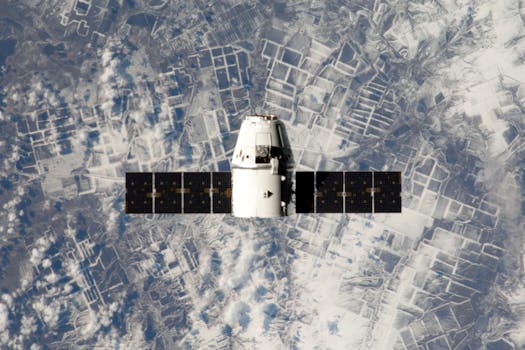
GEO Satellites: The Backbone of Global Connectivity
GEO satellites, or Geostationary Earth Orbit satellites, are a type of satellite that orbits the Earth at an altitude of approximately 36,000 kilometers, remaining stationary relative to a fixed point on the equator. This unique characteristic allows GEO satellites to provide continuous coverage of a specific region, making them an essential component of modern telecommunications. The Focus Keyword: GEO satellites have become a vital part of our daily lives, enabling global connectivity, facilitating international communications, and supporting various applications such as navigation, weather forecasting, and remote sensing.
History and Development of GEO Satellites
The concept of GEO satellites was first proposed by science fiction writer Arthur C. Clarke in 1945. However, it wasn’t until the 1960s that the first GEO satellite, Syncom 2, was launched. Since then, numerous GEO satellites have been launched, with significant advancements in technology, enabling faster data transmission rates, higher capacity, and improved signal quality. Today, GEO satellites are used by various organizations, including governments, telecommunications companies, and broadcasters, to provide a wide range of services such as television broadcasting, telecommunications, and internet connectivity.
Applications of GEO Satellites
GEO satellites have a wide range of applications, including telecommunications, navigation, weather forecasting, and remote sensing. In the field of telecommunications, GEO satellites are used to provide internet connectivity, enable international communications, and support mobile networks. Navigation systems such as GPS rely on GEO satellites to provide location information and timing signals. Weather forecasting agencies use GEO satellites to monitor weather patterns, track storms, and predict weather conditions. Remote sensing applications include monitoring environmental changes, tracking natural disasters, and managing natural resources.
Challenges and Limitations of GEO Satellites
Despite the numerous benefits of GEO satellites, there are several challenges and limitations associated with their use. One of the major limitations is the signal delay that occurs due to the distance between the Earth and the satellite. This delay can be significant, ranging from 250 to 300 milliseconds, which can affect real-time applications such as video conferencing and online gaming. Additionally, GEO satellites are susceptible to interference from other satellites and terrestrial systems, which can impact signal quality and availability. Furthermore, the high cost of launching and maintaining GEO satellites can be a significant barrier for organizations and countries with limited resources.
Future of GEO Satellites
Despite the challenges and limitations, the future of GEO satellites looks promising. Advances in technology are enabling the development of high-throughput satellites that can provide faster data transmission rates and higher capacity. The use of advanced propulsion systems is also being explored, which could reduce the cost and time required to launch GEO satellites. Additionally, the development of small satellites and constellations is expected to play a significant role in the future of GEO satellites, enabling more efficient and cost-effective use of space-based assets.



